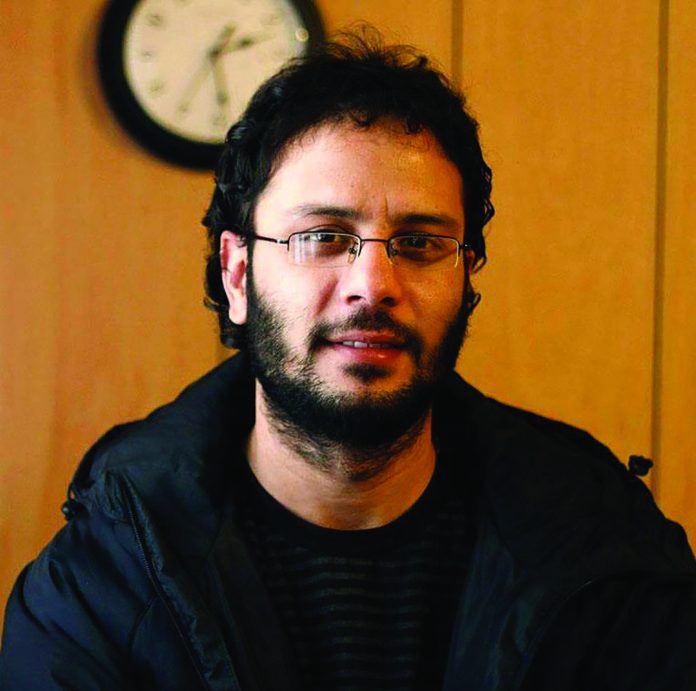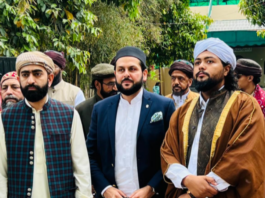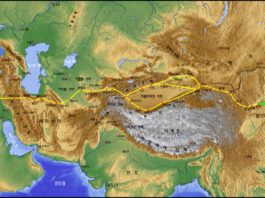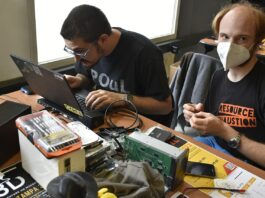Showkat Nanda grew up hard in Indian-run Kashmir, a child of war, iron-fisted rule and relentless tragedy.
He was seven years old in 1989 when rebels — some in their teens, some barely out of them — mounted an insurgency against the standing army that ran their lives. Soon Pakistan, which had been locked in a battle with India over Kashmir ever since the two became separate, sovereign nations in 1947, joined the insurgents. Mayhem ensued.
Within a year, Mr. Nanda lost a brother and a cousin. His 17-year-old brother died trying to cross the otherworldly mountain passes across the Line of Control, the de facto border to Pakistan-controlled Kashmir, while he, like thousands of young men, was seeking to train to fight the Indian forces. Three months earlier, his 16-year-old cousin had been throwing stones at government forces when they shot him dead.
Khadeeja touches the photograph of her missing son, Fayaz Ahmad Gashroo. A man arrested along with him later revealed to the family that Fayaz was tortured for several days in prison and that might have led to his death. Khadeeja told the photographer that she believes her son is alive and will come back. “Everything became so uncertain,” recalled Mr. Nanda, now 34. “I stopped dreaming about my future. Survival became the topmost priority, even for children like me.”
War made him a photographer. Mr. Nanda had discovered a knack for the camera as a boy when he borrowed a film SLR and taught himself how to use it. Had he grown up in another time and place — one where who died, who disappeared and who lost a limb or an eye was not the daily reality — photography might have become a hobby. He had dreamed of becoming a surgeon, after all, a likely profession for a good student from a middle-class, educated family. But he had seen too much. Mr. Nanda studied documentary photography (he has master’s degrees from the University of Kashmir and, thanks to a Fulbright Fellowship, from the University of Missouri) and made it his life’s goal to tell the untold stories of his homeland.
“The Endless Wait” is a project that Mr. Nanda could say he has been gathering string on for most of his life. It focuses on the effect of enforced disappearances as men suspected of rebel activity or who knows what were snatched from their beds, the markets and the streets during the conflict’s last 26 years, never to be seen again.
“Enforced disappearance” is a tactic used in conflicts all over the world, but the vanishing of thousands of men in the villages Mr. Nanda has traveled through have received little attention outside Kashmir. Human rights groups place the numbers at 6,000 to 8,000. International and local human rights groups have found 2,700 graves in North Kashmir alone, some with more than one body. Most families have never found their loved ones, so even with the occasional news of more graves, they continue to hold out hope.
Taja Begum spends most of her time at the window of her small mud house where she lives alone. Her younger sons went missing on the eve of Eid, the holiest Muslim festival, fifteen years before. She told the photographer that they were taken a few months after Indian forces killed her oldest son and that her husband later died of a brain hemorrhage. Locals had offered to help her build a new house, but she refuses in case her sons return so they can know where to find her.
There is even a name for the women who are still waiting to find out what happened to their husbands, not knowing whether they are alive or dead: “half-widows.”
Some of the haunting images in “The Endless Wait” are of women Mr. Nanda knows, longtime friends and neighbors. Some he met and came to know through repeated visits (often while carrying only a Fujifilm X100T, with its fixed 23mm lens, trying to remain as unobtru- sive as possible).
Most, if not all, the people he documents have spent countless hours and all their possessions, reduced to abject poverty, searching for their loved ones in jails, police stations, army camps and torture centers. None that he knows of have been reunited with their loved ones or received their remains.
To be lucky is to know what happened. One woman, Hajra Begum, a 74-year-old widow, received a fist-sized bag of soil in November 2015. It was from the grave of her only son, who had disappeared in the summer of 1997.
Rajja Begum, 67, cries as she tells the photographer about her older son, Abdul Majeed Ganaie, who disappeared when he was on his way to buy vegetables from a nearby village in the winter of 1998. Raja’s younger son, Abdul Qayoon, was found dead in a nearby forest.
Mr. Nanda completed what he calls the first phase of “The Endless Wait” with support from the Magnum Emergency Fund, and hopes to exhibit it within Kashmir and beyond. But he is just getting started.
In the next phase of this project, he hopes to document the resilience and resourcefulness of these women and families. “Despite suffering so much pain, which is unending,” he said, “there is also a positive aspect of their lives, like bringing up children and educating them.” He wants to capture the hope the women represent by carrying on their lives.
“I say that 90 percent of what happened in the last 26 years is still not known to the people living in other parts of the world,” he said. “I want to revisit most of those stories — documented or undocumented — and tell them to the world in my own unique way, the way they have never been told.”
Resources: By Evelyn Nieves Credit Showkat Nanda/Magnum Foundation




